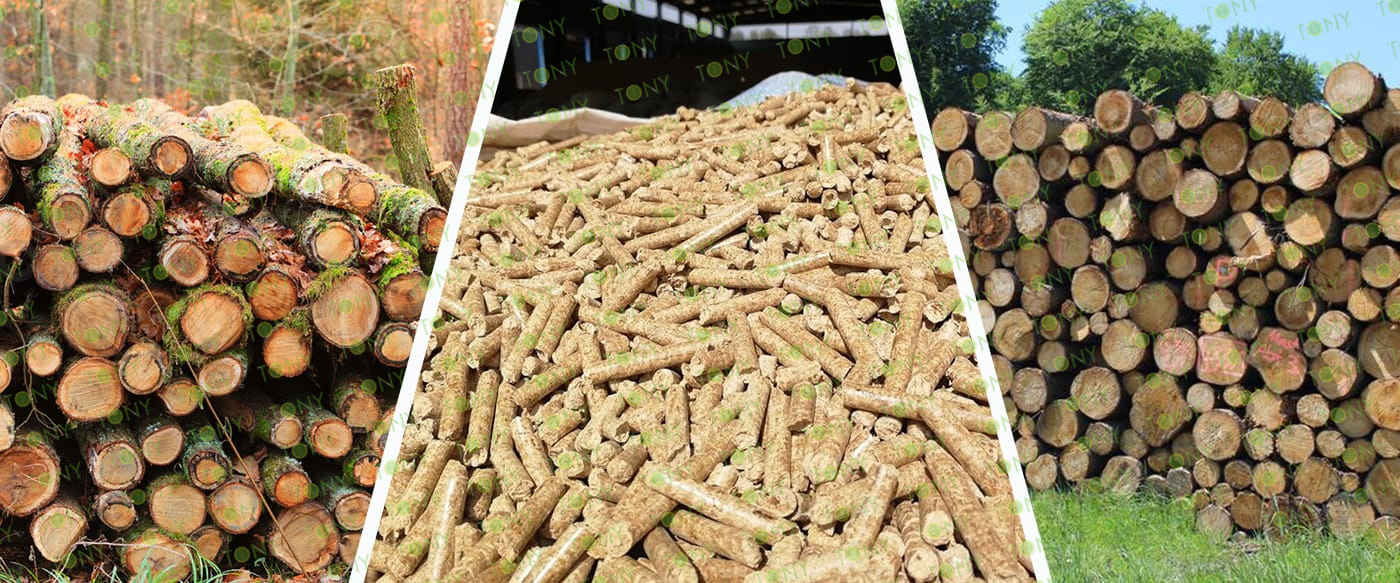Traditional fossil energy is non-renewable. Are there other environmentally friendly energy sources that can replace natural gas? Today, I will introduce renewable biomass energy.
Biomass pellet fuel is mainly made from agricultural "three residues" such as wheat, corn stalks, rice straw, rice husks, peanut shells, corn cores, and leaves, branches, tree bark, sawdust, shavings, wood chips, etc., as well as forestry waste such as wood chips, sawdust, and wood shavings. These are processed into pellet form by a biomass pellet machine to become a new type of environmentally friendly energy.
1. What is biomass pellet fuel?
Biomass pellet fuel is mainly made from wheat, corn stalks, rice straw, rice husks, peanut shells, corn cores, and agricultural "three residues", as well as leaves, branches, tree bark, sawdust, shavings, wood chips, etc. These forestry wastes are processed into pellet form by a biomass pellet machine to become a new type of environmentally friendly energy. The diameter of biomass pellet fuel is generally 8-10 millimeters. Depending on the different materials, the calorific value can reach 3000-4500 calories per kilogram.

2. The regenerative advantages of biomass pellet fuel
The raw materials for biomass pellet fuel are relatively abundant. It can be processed from: agricultural crop stalks, leftover materials from forestry processing, even livestock manure, urban garbage, etc. Biomass pellet fuel is different from traditional fuels such as coal, oil, and natural gas, which are non-renewable. Coal, oil, and natural gas are used up gradually and will eventually be depleted. However, biomass pellet fuel is a renewable energy source. As long as there is air, water, soil, and sunlight on the earth, we have sufficient plant raw materials to utilize.
After the biomass raw materials are compressed and formed by the biomass pellet machine, their volume is significantly reduced, making them more convenient for transportation, storage, and use. This solves the key problem of large-scale utilization of biomass. Therefore, biomass pellet fuel is very suitable for biomass power generation, the clean energy transformation of industrial boilers, and rural new cooking fuels.
3. The environmental advantages of biomass pellet fuel
The diameter of biomass pellet fuel is generally 8-10 millimeters. The length is 4-5 times its diameter. The crushing rate is less than 1.5% to 2.0%. The dry base moisture content is less than 10% to 15%, the ash content is less than 1.5%, the sulfur and nitrogen contents are both less than 0.07%, and the carbon content is less than 0.5%. The environmental emissions of biomass pellet fuel reach the emission standards of gas boilers.
4. The cost advantages of biomass pellet fuel
Biomass pellet fuel utilizes various wastes. After processing, it not only solves the pollution of waste to the environment but also can replace coal for combustion in boilers. In the special combustion equipment for biomass pellet fuel, the fuel utilization rate is the same as that of coal, which is one-third of the cost of gas-fired and oil-fired boilers and one-fourth of the cost of electric boilers. In terms of replacing high-cost energy sources such as gas, biomass pellet fuel has inherent advantages.
After the biomass raw materials are compressed and formed by the biomass pellet machine, their volume is significantly reduced, making them more convenient for transportation, storage, and use. This solves the key problem of large-scale utilization of biomass. Therefore, biomass pellet fuel is very suitable for biomass power generation and the clean energy transformation of industrial boilers. The promotion of biomass pellet fuel has greatly expanded the space for the environmental and cost advantages of biomass fuel. In recent years, the development of biomass pellet fuel has been booming.





















